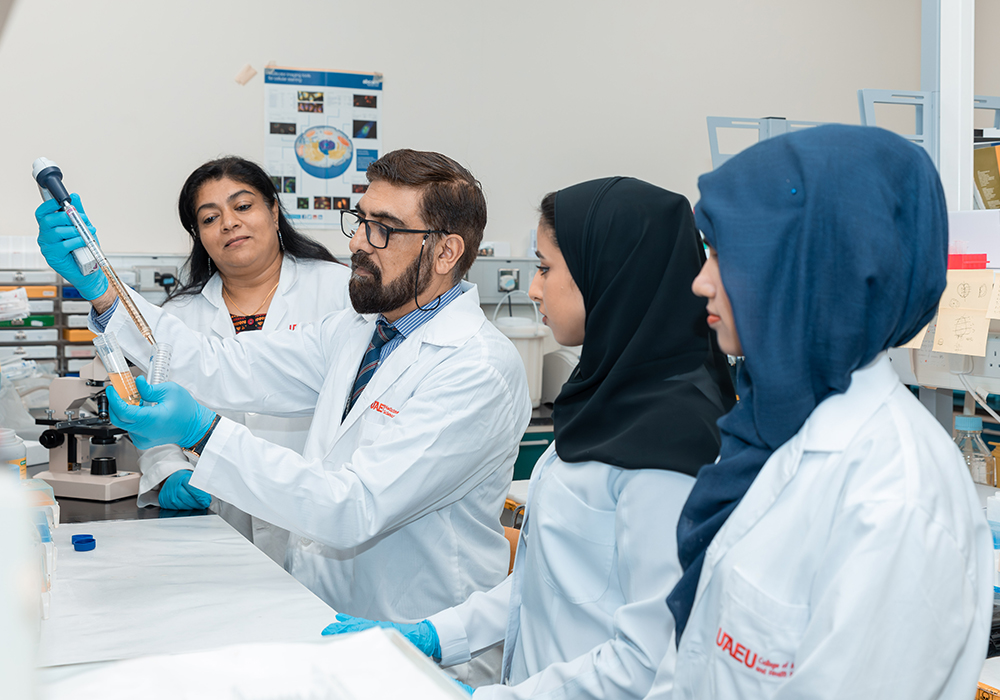Vaccine against Epstein-Barr Virus
A new study by researchers at the United Arab Emirates University (UAEU), published in the journal Vaccines, evaluated a virus-like-particle (VLP) vaccine for preventing Epstein-Barr virus using a novel rabbit model of EBV infection.

Epstein–Barr virus is a common herpesvirus asymptomatically carried by over 90% of the world population. Primary infection typically occurs during early in childhood and the virus persists for life without causing disease in the vast majority of the people. However, if the virus-host balance is perturbed, the virus can trigger a range of diseases, including infectious mononucleosis, multiple sclerosis, and several types of malignancies. “The burden of EBV-associated diseases is enormous,” Prof. Gulfaraz Khan said, senior author of the study and professor of viral pathology at the College of Medicine and Health Sciences, UAEU. “Although the virus was discovered nearly 60 years ago, we still do not have an effective and approved vaccine,” added Dr Khan, who has been studying this virus and its associated diseases for nearly three decades.
The vaccine was developed by the German group over a decade ago and shown to be highly immunogenic, triggering a strong humoral response in mice. However, since EBV does not infect mice, the efficacy of the VLP vaccine in preventing EBV infection could not be addressed. The UAEU team developed a novel rabbit model of EBV infection and they have shown that this model recapitulates EBV infection in humans. The team have been using this model to address a number fundamental questions on the biology of EBV and its associated disease. In the current study, they used the rabbit model to examine the efficacy of the EBV VLP vaccine developed by the German group. The findings of this study indicated that animals vaccinated with two doses of the VLP vaccine elicited higher antibody responses to total EBV antigens compared to animals receiving one dose. Vaccinated animals also elicited both IgM and IgG to EBV-specific antigens. Analysis of peripheral blood and spleen for EBV copy number indicated that the viral load in both of these compartments was lower in animals receiving 2-doses. However, the VLP vaccine was ineffective in preventing EBV infection. Commenting on these results, Dr. Khan added, “these findings highlight the difficulty in producing an effective sterilizing vaccine against EBV. However, our rabbit model has proved to be a great platform for evaluating potential vaccines against EBV.”
The research team consists of, Dr. Narendran Reguraman, Dr. Asma Hassani, Ms. Pretty S Philip from UAEU and Dr. Dagmar Pich, Prof Wolfgang Hammerschmidt from Germany .
To read more about the research: https://pubmed.ncbi.nlm.nih.gov/36992124/
Do you find this content helpful?
عفوا
لايوجد محتوى عربي لهذه الصفحة
عفوا
يوجد مشكلة في الصفحة التي تحاول الوصول إليها

